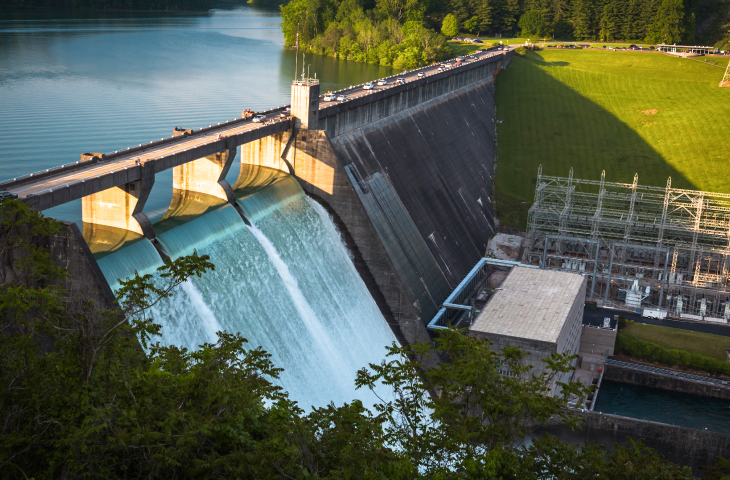Articles
The Original Renewable Power
Clean hydro power is a big benefit of TVA’s longstanding River Management function. And though hydro power benefits are the same as they ever were, the way we manage the river has evolved significantly through the years. Here’s how.

Ancient Knowledge
Dams, of course, are ancient concepts, dating back thousands of years. The ancient Egyptians built the first dam known to exist, and by 100 AD the Romans were using concrete and mortar in their construction.
Since its earliest days in the 1930s, TVA has been managing the flows of the river system with 49 dams, 29 of which produce conventional hydro power. With the backdrop of World War II, TVA carried out one of the largest hydro power construction programs ever undertaken in the United States. In those days, careful computation of water levels was a laborious process done by hand.
“It’s interesting to note that in the way we manage reservoirs, the math itself hasn’t changed a lot, but the systems we use to compute it really have,” explains James Everett, senior manager of the TVA River Forecast Center (RFC). “The computations used to take a team of 20 to 30 data technicians to start a forecast each day, and they would use tables and charts to plan the routing of water from tributaries to the main system completely by hand. What used to take dozens of people most of a day to complete, we can do today with a push of a button, several times a minute.”
Handwritten charts and hand-plotted graphs led to chart recorders—instruments that measured water levels and moved a pencil on a paper chart, manually plotting elevations throughout the day. And the practice of measuring rainfall has become much more of a science.
“The old way, how you got it was an observer who had a rain gauge on their farm or at the fire hall or in the National Park,” says Everett. “They’d report those numbers through the phone systems, which evolved into modem and cell phone communications, and now we get it directly by satellite. Some of these gauges are in very remote locations. The batteries have solar panels so they can be self-sustaining. They collect rain and stream measurements and use a satellite antenna to send data back to Knoxville which we then pull into our models. Happens like clockwork, every day.”
Controlling the Flow
The machinery of hydro power itself is a mix of old and new.
“It’s interesting to me how some of the generators at the dams are 70 to 80 years old—the original generators in some cases,” says Darrell Guinn, RFC manager. ”Operators used to have to be with them at all times in the control rooms, and now we can control them remotely from Chattanooga. We’re still using the old technology of generators, but the technology has greatly advanced how efficiently we operate them.”
In addition, the RFC uses software that standardizes data management with the National Weather Service. By collecting and storing shared data, the software allows the RFC to seamlessly import data into its models and send out forecasts and reports.
“Imagine doing that by hand,” says Everett. “Someone would collect a piece of data, plot it on a graph, do hand computations for a routing, then write that down or have it typed up. Then later on, it might be faxed or sent to a newspaper or as a table to the Associated Press. This would have taken the better part of a day, and now we can do it every few hours around the clock.”
There are other ways in which TVA experts use very old sources of data mixed with new ways of interpreting them. For example, the rings found in tree trunks can reveal centuries of drought and flood. Through the science of dendrochronology, TVA is using new technology to interpret what tree rings can reveal about water patterns, allowing us to do what earlier scientists couldn’t do — make informed predictions about rainfall patterns to come.
Don’t Forget the Fish
“It’s important to remember that in addition to clean power generation, TVA’s management of the river system also benefits aquatic health,” adds Everett. “Communities of fish and the organisms they feed on are helped by regulating temperatures and adding dissolved oxygen. Controlled minimum flows keep aquatic life in the riverbeds from going dry.”
Earth Day focuses a lot of energy on cleaning up, repairing environmental damage and educating people about pollution and other harm to the earth. By using the clean and sustainable power of water to help provide electricity, TVA boosts the goals of Earth Day, every day.
Learn more about how TVA manages the river system here.
Check out an animation that shows how it works, here.
Download the Lake Info app and keep track of reservoir water levels here.